Subaru’s Outback wagon is known for being able to get you there – just not very quickly. It was one of the first high-riding wagons with all-wheel-drive, the automotive critter that’s called a crossover today.
It was tenacious, rugged – and slow.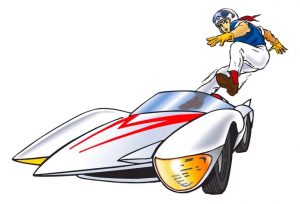
Now, it’s quick.
You can get it with a new 2.4 liter turbocharged engine that’s nearly as powerful as the engine in the high-performance WRX.
And with almost twice the ground clearance.
So you’ll still get where you’re going.
And back.
The Outback is a full-size wagon, which all by itself makes it scarce. There aren’t many wagons left, period. This one comes standard with all-wheel-drive and can be ordered with a high-performance turbocharged engine.
These two attributes make it unique.
Prices start at $26,645 for the base trim with an updated version of the 2.5 liter engine that used to be the Outback’s only engine.
The new 2.4 liter turbo engine comes standard in the XT, which stickers for $34,895 to start.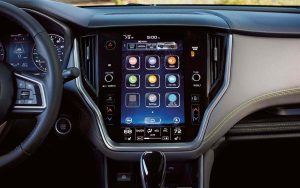
A top of the line XT Touring – with the turbo engine, an 11.6 inch touchscreen, heated steering wheel, Nappa leather seats, insulated side glass and a full-size real spare tire (something that’s hard to find anywhere) stickers for $39,695.
What’s New
The Outback gets a full makeover for 2020.
In addition to the new turbo 2.4 liter engine, the output of the Outback’s standard 2.5 liter engine has been kicked up a few – and so has its gas mileage.
Back seat legroom has also been increased – and cargo capacity decreased . . . but not really. In fact, a new way of measuring cargo capacity is being used starting this year that makes it seem the new Outback has slightly less cargo capacity than the previous Outback.
It’s similar (for those who remember) to the changeover from rating horsepower according to a “net” vs “gross” standard. The “gross” standard made it seem that a given engine was more powerful by measuring its output on a stand, without a production exhaust system connected and without engine-powered (and power-sapping) accessories such as alternators, power steering pumps and AC compressors installed. The “net” method – which is the method used since 1972 – rates an engine’s power as installed in the car, with everything hooked up.
The-new-for-2020 cargo-capacity rating method is of a piece. The actual space isn’t less – but the way the space is measure has changed.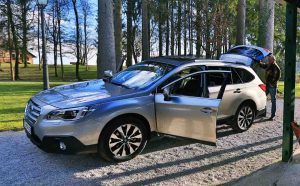
What’s Good
A wagon, still.
As capable as ever – and quicker.
As unique as ever.
What’s Not So Good
2.4 liter engine is only available in the higher-priced trims.
No version of the new Outback is available with a manual transmission.
Every version of the new Outback comes standard with a pushy suite of driver “assists,” including one that uses facial recognition tech.
Last year’s Outback came standard with Subaru’s solid but slow-pokey 2.5 liter engine.
Without a turbo – and without much horsepower.
It’s still the Outback’s standard engine. And it’s a bit more powerful engine. Some tweaks raise the output to 182 hp from 175 last year, a solid number either way for a four cylinder engine without a turbo – and without any chance you’ll ever need to repair or replace a turbo.
It also uses a bit less gas – 26 city, 33 highway vs. 25 city, 32 highway posted by last year’s 2.5 liter-equipped Outback.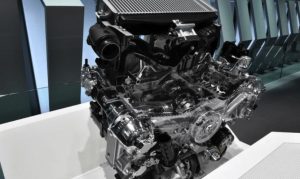
But the big news is the Outback’s newly available 2.4 liter engine – which has a turbo. It’s a lot more powerful – and only uses a little more gas.
It makes 260 horsepower – nearly as much horsepower as the high-performance WRX’s 268 hp engine – and manages to deliver 23 city, 30 highway, within the margin of error vs. the standard 2.5 liter engine.
Both engines are also boxer engines – which means that instead of the usual four-in-a-row, you have two one side and two on the other side. Laid flat and opposing each other horizontally rather than standing up vertically. Instead of all four pistons pushing down on the crankshaft, two push across the crankshaft while the other two push back in the opposite direction.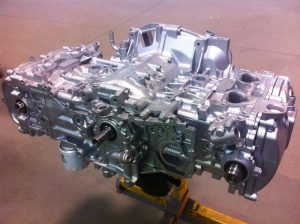
Hence horizontally opposed boxer engine.
There are several advantages to this layout – the first being that it’s a naturally balanced layout. Two of the four cylinders pushing one way balance out the other two pushing back, from the opposite direction. This makes it unnecessary to hang a heavy balancer on the crankshaft to counteract the imbalances of four pistons all pushing down on the crankshaft.
This means a lighter engine. It’s also a more compact engine that fits more readily in a tight engine bay and leaves more room for hands and tools in the engine bay.
Another advantage is weight distribution. The boxer engine sits much lower in the car – lowering the car’s center of gravity. The engine’s weight is also equally distributed across the car’s centerline.
This improves the car’s balance and helps with traction.
There is one potential disadvantage, however. Oil follows gravity. When an upright engine is turned off, the oil flows straight down, into the pan – away from the cylinder heads. When an engine lays flat, the oil tends to stay where it’s at.
In the cylinder heads.
This can make the boxer engine a more leak-prone engine and there is the possibility of oil pooling around the valve stems in the heads. Over time, these stems can get crudded-up and sealing problems sometimes ensue – leading to oil burning problems. This inherent susceptibility can be compensated for by per-the-book oil/filter changes (clean oil flows better, doesn’t gunk up as easily) and use of nothing less than the oil (viscosity and grade) recommended by Subaru.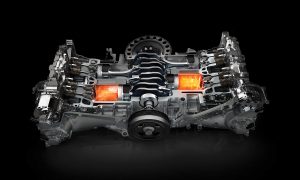
Both of the Outback’s engines are paired with what Subaru styles an “eight-speed” continuously variable (CVT) automatic transmission. In fact, it has infinite speeds – being a CVT. The “speeds” – Subaru means gears – are simulated. There are no gears to change in a CVT, which uses a variable band/pulley system to vary the ratio at any given moment, continuously, in response to road speed and acceleration requirements.
CVTs are more efficient (which partially accounts for the Soobie’s good gas mileage) and very smooth, precisely because they don’t shift. But many people don’t like the lack of shift feel of the CVT and dislike the characteristic CVT noise, especially when the driver floors the accelerator. The typical CVT will respond by letting the engine rev to where it makes maximum power – which for most engines is at high RPM, often near the engine’s redline – and will then hold the engine at that RPM (rather than downshifting to the next gear, which isn’t there) until the driver backs off the accelerator. This is normal – and more efficient than the escalator up (and down) shifting of a traditional (and geared) automatic. But it also makes for busier-feeling and sounding acceleration.
So Subaru programmed in the feel of shifts – but without the shock. Or the revs. You’ll see the tach rise – and fall – but won’t feel the lurch forward and back that accompanies upshifts in a car with a conventional automatic that actually does shift.
The Outback has always been good off-road. Now it can tear up the road. And without looking like it has that on its mind!
Unlike the WRX – which looks like that’s all it has on its mind.
The Outback runs a lower profile – which lets you run it harder (and more often) with less risk that you’ll end up wearing an orange jumpsuit, picking up litter by the side of the road.
With the the 2.4 liter engine, it’s almost as quick as the famously speedy WRX. But because it comes standard with 8.7 inches of ground clearance vs. 4.9 in the WRX it’s also much less likely to get stuck.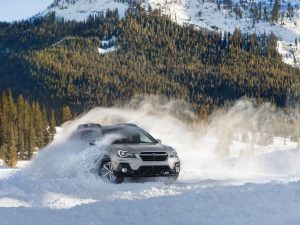
Out in the Woods – where your Libertarian Car Guy lives – Outbacks are as popular as 4×4 trucks, because they can go almost anywhere a 4×4 truck can go. Just without the $70 fill-ups and the 15 MPGs.
Speaking of fuelish things… .
The Outback with the 2.5 liter engine may not be WRX-speedy, but it can travel more than 600 miles on a full tank – which is easily twice as far as any electric car car travel on a full charge. And the Outback can be refueled and ready to travel another 600 miles in less than five minutes – as opposed to several hours for the electric car.
In addition to be able to go almost anywhere, the Outback doesn’t make you wait to get there.
But you may want to take your time.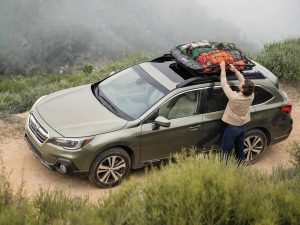
The Outback’s ride is what you’d expect from a big wagon and much more lower-back and road-trip friendly than the WRX’s – which is tuned for the track.
And because it is a big wagon – and not a big truck or SUV – the Outback is easy to get into – and out of. It has about the same step-in height as a car, despite its almost-truck/near-SUV ground clearance.
Its roof is also low enough that you can reach it without a ladder. This makes using the standard roof-racks to actually carry stuff much more realistic.
The new Outback doesn’t look radically different from the previous Outback but it’s essentially an all-new – and slightly larger – Outback.
It shares its platform – or basic underlying structure – with Subaru’s full-size Legacy sedan and can be considered a wagonized version of the Legacy – with more ground clearance.
And much more room for cargo.
There’s only 15.1 cubic feet of cargo space in the Legacy’s trunk – vs. 32.5 cubic feet behind the Outback’s second row. With the second row folded, the Outback’s cargo room expands to 75.7 cubic feet – almost five times as much cargo space – and without significantly increasing the overall footprint.
Subaru has also made the new Outback’s backseats roomier. Legroom expands to 39.5 inches vs. 38.1 inches previously.
The wagon layout is also a nice departure from the crossover SUV layout. You ride higher up, but you’re still lower down – as far as the car itself goes. Subaru seems to be the only car company that can sell wagons.
A drive in this one goes a long way toward explaining why.
One thing detracts from what’s otherwise a hard-to-fault car. And it may not be a fault that bothers you.
All Outback trims come standard with what Subaru calls a DriverFocus Distraction Mitigation System that uses facial recognition tech to identify who’s behind the wheel and whether they’re falling asleep behind the wheel – according to eye movement and other parameters.
This is technologically amazing. But some drivers may not want (like Elvis) to be rekonized – facially or otherwise.
Another tech feature – one that most drivers probably will like – is a new app called Chimani that provides a field guide to 400 national parks, written by local travel experts.
The Outback is the first 2020 model car that offers this feature.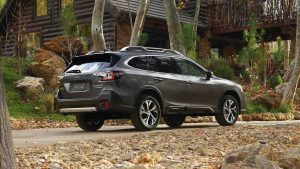
Another feature the new Outback offers is more towing capacity. Models with the base 2.5 liter engine can tow up to 2,700 pounds but those with the new turbo engine can pull as much as 3,500 lbs.
You can get more towing capacity in a same-sized SUV or crossover SUV but good luck finding it in a same-sized wagon.
The Bottom Line
Getting there no matter the weather – or the road – is good. Getting there a little faster is never bad!
. . .
Got a question about cars, Libertarian politics – or anything else? Click on the “ask Eric” link and send ’em in!
If you like what you’ve found here please consider supporting EPautos.
We depend on you to keep the wheels turning!
Our donate button is here.
If you prefer not to use PayPal, our mailing address is:
EPautos
721 Hummingbird Lane SE
Copper Hill, VA 24079
PS: Get an EPautos magnet (pictured below) in return for a $20 or more one-time donation or a $10 or more monthly recurring donation. (Please be sure to tell us you want a sticker – and also, provide an address, so we know where to mail the thing!)
My latest eBook is also available for your favorite price – free! Click here. If that fails, email me and I will send you a copy directly!


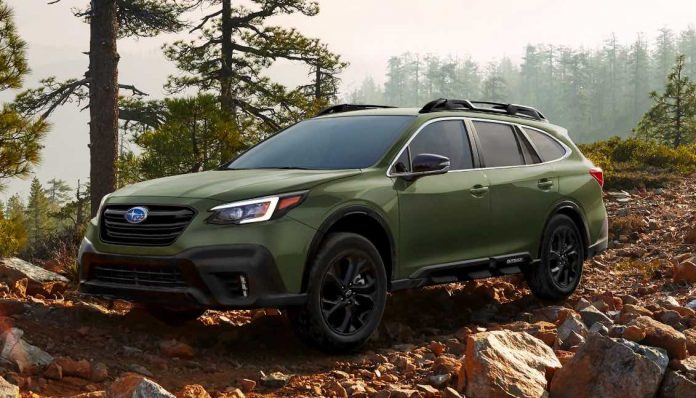

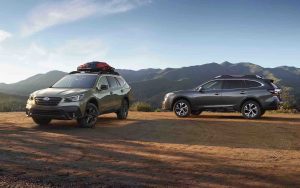
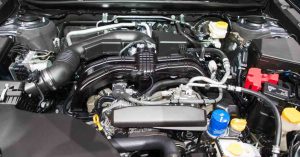
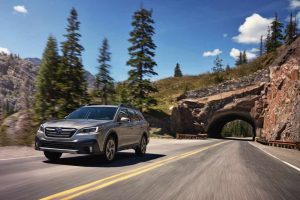

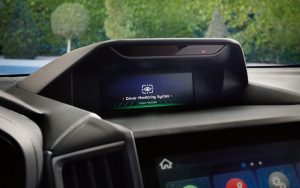








If you buckle and unbuckle the driver side seat belt 20 times in 30 seconds the seat belt chime and auto stop are permanently disabled until the battery is disconnected.
I’m sticking with the last of the 3.6R outbacks. I like the practicality of the thing. I put a 50 gal water heater in back and closed the lid. I did modify the exhaust with a bolt on kit. Not too loud but at 4 thousand RPM and more it has a decent sound. Not a Porsche or Ferrari sound but still.
Maybe I’m imagining things but power and MPG are improved. I’m 70 years old so that may be a factor. I’m also re-badging the 3.6R emblem because after all this is a modified car. The new Emblem will be 3.6RS. the S will be painted red. I went to the local junk yard and pulled off about a dozen S letters and will choose the best representative.
BTW my other car is a Ford Mustang Cobra SVT convertible made to look like a 2003 Cobra. All SVT’s came with 5 speed manual trans.
I like my ‘15 2.5 prem OB. Yup, not fast, need to wind the pi.. out of it to pass (the clovers) on 2 lane mt pass rds. I sleep in mine all the time car camping etc. Would love to have 260 bhp, but $39k right before the biggest recession/stock market crash Of all times, doesn’t work for me. Bought my OB new, after subtracting sale of my previous car, S4 Avant, I’m only into the OB for upper teens. Less than 1/2 of a 2020 top of the line. Hard pass for now. #IHateClovers
Ditto, Dipshift…
I’m making an “investment” of maybe $150 in a new stereo for my ’02 Nissan… after I get my shoulder issue under control!
Full sized wagon ? Can an adult sleep in the back while on a road trip with the rear seats folded down ?
Just asking.
I don’t know but you could in a Vega wagon. I did several times since my friend would pick me and the wife up and I’d have just gotten in off the road and probably been up more than a couple days. A sleeping bag and piller and I’d be gone. If they’d have put a decent drivetrain in those cars they’d still be around. The drove good and looked good. You could buy a kit for them to use a V8. I doubt anyone ever did that and didn’t destroy them racing.
I do it all the time in my ‘15
I still hear Paul Hogans voice from the 90’s.
“It’s meee nuu Subarau Outback.”
That’s not a wagon.
Now THIS is a wagon!
I wonder if it was intentionally named for Mic Dundee to sell them.
I don’t think “grand wagon” would have the same ring to it.
https://www.youtube.com/watch?v=juxxYjvaE0c
My vehicles have manual trannys and I will not own a rubber band tranny! There will not be a EV in my future either. This old fart will drive forever with what I have and hope President Trump fires the entire EPA and eliminates the over regulation of vehicles. There is nothing wrong with ICE and plants/trees love and require carbon dioxide.
Hi JR,
Amen. Me too. The Orange Man is our only realistic hope of stemming the tide. 2020 is going to be the decisive year. Either they will – and we lose. Forever.
Or we stand a chance.
Oregon Subaru Pyrate here….This new Subaru is OK, but I will be holding on to my 2008 Outback XT with full rated WRX engine, manual transmission, and NO Brave New World BS. The plan….steadily rebuild and replace parts as I go with my only intention being to never buy one of these new cars with all their crap. Heck, for the 08′, a new stage-2 drop in engine runs about 3-4k, much better than the 40k for a vehicle with mandatory invasive tech.
You get the point. Now, time to take the Siberian Huskies to the mountain for a little back country snow dog skiing, driving 70mph up a snow covered road with my 08′ and a set of studded Hakkapeliittas…(untracked and without DriverFocus Distraction Mitigation System).
Oh yeah, and good luck to the AGW that attempts to keep up with my driving skill and equipment on icy mountain roads. Aaahaaaahhhaaaaaaahhaaa!
Nope.
Owned a 2011 Outback. Not a driver’s car by any measure. You shepherded it down the road. I forget how many recalls, including the famous Takata recall, which I was assured wasn’t a thing with this model, until it was. A timing belt rather than a chain, even though I was assured it was a chain. That costs roughly $1k every time it needs to be replaced. I believe this is an interference engine, so you’d better replace it.
Finally had enough of it and sold it. Guy bought it for his kid who was going to college in snow country. 3 month later I get an irate email asking about the transmission. He had my maintenance records and invoices, showing it had been serviced every 30k. I will note the original maintenance schedule showed it as “lifetime fluid”. As my mechanic said, “Bullshit. We replace it very 30k.” Something that Subaru later changed, but never notified owners of.
One day she’s driving and it stalled. She calls Dad, who comes and gets it. Eventual diagnosis was a new CVT and torque converter. He’s ticked, but I’m not going to help him out. I have no idea how it was driven after it left me. I do know it hadn’t spit a code in over 40k, and he said his own mechanic had went over it and found nothing.
I don’t care what Subaru has done with it, I wouldn’t own another. I grew up in the 70s and the things were indestructible. Now, not so much.
Yeah, even though the CVT was redesigned in 2015 I still don’t trust them…to own, I’d still lease at the right price.
If I wanted to buy I’d get a used one with the 3.6L H6 engine.
I love Love LOVE my 2012 Outback. I am not happy that the 3.6L H6 is gone. That engine gives power without the problems of turbos. Nor am I happy about all of the nanny gizmos.
How is the CVT more efficient if the primary reason for having one (keeping the engine in the zone) circumvented by software that simulates the rev variation of shifting gears? Is it something that can be overridden? At one time the goal of some vehicles like the quintessential luxury brands like Cadillac and Rolls-Royce, was to hide the engine from the senses. I get that the yuppie boomers changed that in the 1980s with the rise of the German touring coupes but it seems to me simply eliminating the tach and making the smoothness a feature not a complaint might just be worth something.
How is this “wagon” different than an SUV ????
My best friend parked his Wagoneer here and left it cause of low oil pressure. He loaned it to another friend who ran 3 quarts out of it and it was never the same and also ran the back into a tree warping the rear of the body. If the body had been straight I’d have stuck a GM engine and transmission in it and driven it to this day. I loved the 4 WD on them and they were quiet and rugged with great seats. Never saw a dog that didn’t jump into one when a door was open. No invitation needed.
We have an XJ – the mini-Wagoneer. Just about the most fun thing ever to drive but I don’t have a lot of confidence in it for long trips. Just a lot of “jeep things” that aren’t quite up to full size GM pickup standards, at least compared to back in that day. The engine is noisy but seems to last forever.
Jeep sure got it right with the 4wd and suspension as far as being nimble and sure footed. We run it in the “full time” 4wd setting nearly all the time, and it just doesn’t seem to care what is underneath. The stock suspension articulates enough that it keeps balanced weight on all four wheels on anything resembling a road. Theoretically you can get stuck spinning just one wheel but it almost never seems to happen. You need to get it in an awful twist and then you should probably be in low range (locked up) anyway.
Oh, and it’s funny that Jeep saw no need for either lock-out hubs or an axle disconnect. So it’s just like running with front hubs locked in all the time, 2wd or 4wd. Despite being a solid or “live” front axle, you can’t add lock out hubs because it has modern sealed bearing hubs. Doesn’t seem to matter because it gets 22 mpg on the highway even in FT 4wd.
I wish GM had bought out Jeep instead of Mopar …
Nice 2.4 Turbo engine. Too bad they can’t…..or won’t….drop that into the Toyota/Subie BRZ sports car.
From perusing the pics, it appears the Outback may have shed about 25% of its profoundly homely/stodgy looks. Plenty left though.
I’d never buy one……….CVT.
Suburu seem to be the car built for blue state lefties who need something more practical than the electro-karts they’d really prefer.
Hi Mike,
It’s getting very difficult to avoid CVTs…because Uncle. I agree with you. And I’ll go farther: I’d prefer a manual six-speed in a car like this.
Eric, you did not mention the visibility out of the thing. The rear quarter photo seems to have poor visibility to the rear quarters and the back.
I did make inquiry on a WRX with manual but this seems more practical, it is too bad that there is no manual offered as I would likely get serious on buying one. (If it is a strippo)
Eric, here’s another thing that I want in a car that never gets reviewed.
I like driving with my windows down. Electrics on the front door are far more important than air conditioning. I am far happier with the loss of two fatsos in the car as extra weight of the junk.
In Wisconsin I would never consider an electric car other than if I lived in an old fart gated community. I have street parking as my wife hogs the driveway and I let her get away with it. Our garage is packed with junk and worse, including outdoor decorations.
I miss my old Datsun 1600 and later my 250 dollar MGB that cost me little to rebuild courtesy of JC Whitney when they had all of the OEM parts. Sure, they were toads, but going around corners was far more fun than drag racing in my brother’s ’53 Studebaker with B+M Turbo-Hydro and 427 Chebbie 13.5/1 and Holley 3 bbl.
It’s got some good things going for it, I really like the range. The Subaru stigma and cvt would back me off also. I’d take a Regal Tour X over this. I hear theres some deals to be had on those.